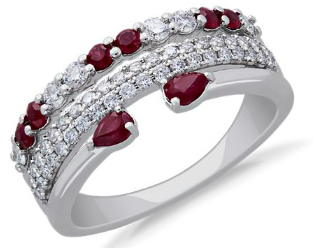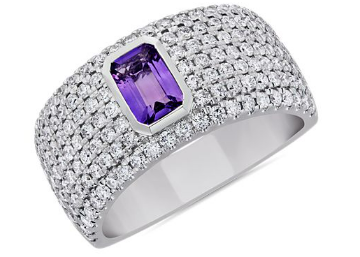


Physical Properties of Diamond
Color Colorless, pale yellow to deep yellow, brown, white, blue-white; less commonly in oranges, pinks, greens, blues, reds, gray to black.

Streak Colorless
Luster Adamantine to greasy
Transparency Transparent, Translucent, Opaque
Cleavage 111 perfect in four directions
Diaphaneity Transparent to subtransparent to translucent
Mohs Hardness 10
Specific Gravity 3.52±0.01
Diagnostic Properties Hardness, heat conductivity, crystal form, index of refraction, dispersion.
Crystal System Isometric
Tenacity Brittle
Fracture Irregular/Uneven
Density 3.5 – 3.53 g/cm3 (Measured) 3.515 g/cm3 (Calculated)
Chemical Composition:
Diamonds are made of carbon atoms arranged in a crystal lattice structure. Each carbon atom forms strong covalent bonds with four other carbon atoms, resulting in the characteristic hardness and brilliance of diamonds
Hardness:
Diamond is the hardest naturally occurring substance on Earth, with a rating of 10 on the Mohs scale of mineral hardness. This hardness makes it highly durable and resistant to scratching
Color:
Diamonds come in a range of colors, including colorless, yellow, brown, and even rare and valuable colors like pink, blue, and green. Colorless diamonds are often considered the most valuable because they allow the most light to pass through, creating the greatest brilliance
Clarity:
Diamonds may contain internal flaws (inclusions) and surface imperfections (blemishes). The Gemological Institute of America (GIA) uses a clarity scale to assess the presence and visibility of these characteristics. The highest clarity grade is “Flawless,” meaning no inclusions or blemishes are visible under 10x magnification
Carat Weight:
The size of a diamond is measured in carats. One carat is equivalent to 200 milligrams. Larger diamonds are rarer and typically more valuable, but a diamond’s value is also influenced by its cut, color, and clarity.
Cut:
The cut of a diamond refers to its proportions, symmetry, and finish. A well-cut diamond reflects light and maximizes its brilliance and sparkle. The cut is often considered the most crucial factor in determining a diamond’s overall beauty
Sources:
Diamonds are found in various parts of the world, with significant sources including Africa, Russia, Australia, and Canada. Some famous diamond mines include the Cullinan Mine in South Africa and the Argyle Mine in Australia.
Industrial Use:
While diamonds are highly valued as gemstones, they also have extensive industrial applications. Industrial-grade diamonds are used in cutting, grinding, drilling, and other applications due to their extreme hardness.
Symbolism:
Diamonds are often associated with love, commitment, and eternity, making them a popular choice for engagement rings and other romantic jewelry
Certification:
When purchasing a diamond, it’s important to look for a certification from a reputable gemological laboratory like the Gemological Institute of America (GIA) or the International Gemological Institute (IGI) to verify the quality and authenticity of the gem Offering popular women’s necklaces such as pendants, chokers and chain necklace. Shop for jewelry in a variety of metals and gemstones to suit any occasion
Diamonds have held a special place in human culture for centuries and are often considered a symbol of luxury, wealth, and enduring love. They are used in various forms of jewelry, including rings, necklaces, earrings, and bracelets, and are highly sought after for their beauty and durability.

















